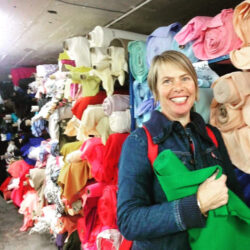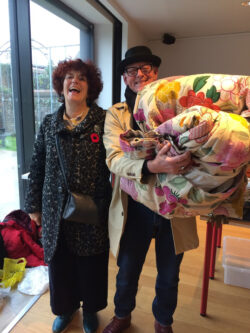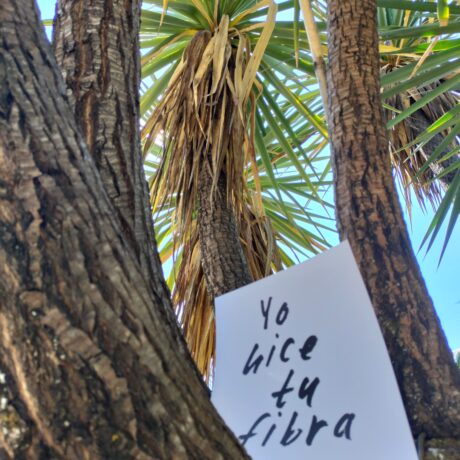The Fabric Swap – repurposing pre consumer waste.
When I was a baby my favourite comfort toy was my ‘raggy’, a piece of muslin cloth. As a toddler I fondly remember my rag books, books made of cloth that use the texture of the cloth to describe the story. As a kid my dressing up box consisted of yards and yards of silky nightie fabric, rejects from my mums handmade lingerie making business. So, I’ve been surrounded and inspired by textiles from day one.
My first stitches were at the age of 7 using my mothers’ scraps to make pin cushions and clothes for my Pippa dolls. My most favourite doll was my rag doll, which of course, my mum made.
A combination of a love of cloth and making and creating has led me to to where I am now. A dressmaker, sustainable fashion activist, the ‘local alterations lady’ and teacher (at local schools and my own Dolly Sewing School).

As I prepare for our first Fabric Swap my focus is on diverting fabric from landfill, an issue effecting our environment as a result of the over production of textiles in order to feed the fast fashion industry. An industry which has become a huge contributor to our climate crisis.
Staggeringly only 1% of textiles are recycled back to textiles at the moment due to blended fibres, technical limitations and economic barriers.
Most conventional textiles are produced by untrained, underpaid, overworked people in unsafe surroundings. Highly toxic chemicals are required to produce textiles from crop to production before the cloth even becomes clothes. Not to mention the water that is used in the production process.
So, choosing sustainable fabrics is important for many reasons. But it’s complex, to say the least!
You can buy Fairtrade textiles, responsibly made by workers who are paid a fair wage in a safe working environment. Organic cloth, produced without poisoning the earth. Recycled fabric, biodegradable textiles, cloth made in the UK or even more locally.
However, I decided that whilst I find cleaner, safer, more ethical fabric options, I’ll also start by extending the life of the fabrics already in circulation.
I use post-production cloth; deadstock, overstock, and fabric from the end of rolls. Around 440,000 tonnes of supply chain waste arises during preparation of fibres to make yarn and during garment production, most notably in China and India.

This waste can be from over ordering (brands order 3-10% more than necessary, some luxury brands destroy their overstock to protect their brand). Faulty fabric caused by printing/weaving errors or the wrong colouring.
Hundreds of thousands of tonnes of fabric are wasted at the design and production stage before clothing reaches the customer. When garments are cut out as patterns, for instance, as much as 15% of the fabric can end up on the cutting room floor.
So, whilst the industry catch up with the landfill crisis and as there is enough textiles in existence already to sustain our demands let’s use up what we’ve got and have fun doing it!








